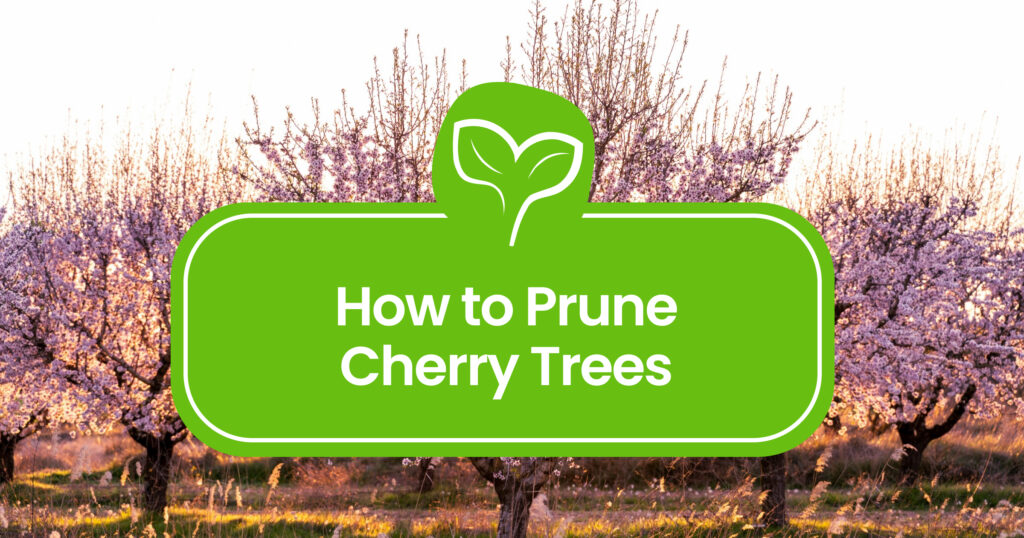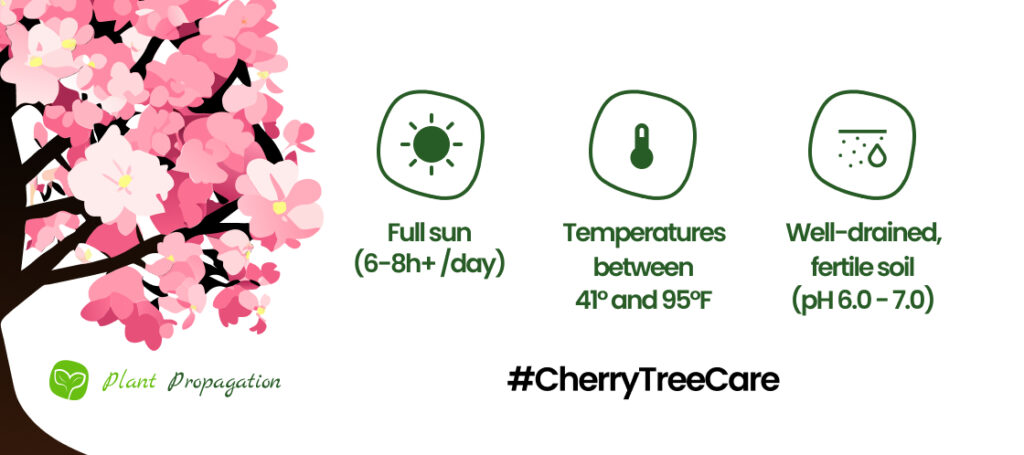
Welcome to the ultimate guide to pruning cherry trees! In this article, we’ll delve into everything you need to know about pruning cherry trees to perfection. From the why and when to the step-by-step techniques and essential tools, we’ve got you covered. Discover the secrets to promoting robust growth, maximizing fruit production, and maintaining the overall health and beauty of your cherry trees.
Why Trim a Cherry Tree?
You might wonder, why bother pruning cherry trees at all? Pruning your cherry tree is more than just snipping branches—it’s about nurturing its growth and maximizing its potential. Here’s why it’s worth the effort:
- Strong Foundation: By directing growth towards a few sturdy scaffold branches, you’re ensuring your tree stands tall and strong.
- Even Growth: Maintaining an even distribution of branches around the trunk allows every part of the tree to thrive.
- Space to Breathe: Keeping proper spacing between branches prevents overcrowding, giving each one room to flourish.
- Grounded Strength: Leaving some small branches on the lower trunk promotes trunk strength, anchoring the tree securely in the ground.
- Future Harvests: Nurturing twig growth sets the stage for future fruit-bearing wood, ensuring a bountiful harvest in the years to come.
When to Prune a Cherry Tree
Timing is key when it comes to pruning your cherry tree. Spring is prime time, as the tree wakes from its winter nap, making it easy to spot which branches need attention. If you miss the spring window, late summer after the blossoms turn to juicy cherries is another opportunity to shape your tree for health and vigor.
So, whether it’s the fresh start of spring or the relaxed vibes of late summer, a well-timed trim ensures your cherry tree thrives and bears abundant fruit.
The Tools You’ll Need
Before you start pruning, make sure you have the right tools for the job.
When it’s time to tackle pruning your cherry tree, having the right tools at hand can make all the difference. Here’s what you’ll need:
- Pruning Shears: These handy tools are your go-to for trimming small branches and twigs with precision. Look for a pair with sharp blades and comfortable handles to make the job easier on your hands.
- Loppers: For those thicker branches that pruning shears can’t handle, loppers are your best bet. With long handles and powerful jaws, they make quick work of branches up to a couple of inches thick.
- Pruning Saw: When it comes to larger branches or tough-to-reach spots, a pruning saw is your secret weapon. Look for one with a sharp, curved blade and a comfortable grip for smooth, efficient cutting.
- Gloves: Last but not least, don’t forget to protect your hands with a sturdy pair of gloves. Look for gloves with a good grip and durable material to shield your hands from thorns and sharp branches.

Pruning Cherry Trees Step-by-Step
Now, let’s get down to the nitty-gritty of pruning your cherry tree. Whether you’re dealing with a young sapling or a mature tree, the principles remain the same:
Pruning Young Cherry Trees
Pruning young cherry trees is more about shaping them into an open, vase-like structure that allows light and air to work their magic. Here’s how to do it right:
- Clear the Clutter: Start by cutting off any suckers from the trunk and shoots aiming towards the center of the tree, as well as weak branches. These are just sucking up nutrients and blocking airflow, so they’ve gotta go. Cut them right outside the branch collar for a clean cut.
- Heading Time: Come fall or winter, it’s time to give your tree a little trim. Make a 45-degree angle cut on the leader (the central trunk), leaving the tree around 24 to 36 inches tall. This encourages the growth of lateral branches and helps shape the tree’s structure.
- Branching Out: Next up, it’s all about creating those scaffold whorls—the set of four sturdy branches that’ll form the backbone of your tree. Choose limbs at 45 to 60-degree angles to the leader and about 8 inches apart vertically. Cut them back to 24 inches with angled cuts above the buds—this is where new growth will sprout.
- Repeat and Grow: As your tree grows taller, keep creating scaffold whorls about 2 feet above the previous set. Choose branches that won’t crowd or cross over the older ones, and trim them back like before. With each careful cut, you’re shaping your cherry tree into a thriving, fruit-bearing beauty.
Pruning Mature Cherry Trees
When it’s time to prune your mature cherry tree, it’s more about balance.
- Prune New Vertical Limbs: Once your tree hits the three-year mark, it’s time to encourage outward growth by pruning out any new vertical limbs. Grab your loppers or pruning saws—shears won’t cut it for this job. Remember to clean your tools beforehand to prevent the spread of disease.
- Clean out Dead or Diseased Branches: Start by removing any dead or diseased limbs, along with any dead fruit hanging around. Cut back any suckers at the base of the tree and say goodbye to crossed branches. Cherries are no strangers to disease, so make sure to tidy up all the leftovers and cover your cuts with a tree sealant to keep those pesky pathogens at bay.
- Find Your Balance: When it comes to pruning cherries, there’s no one-size-fits-all approach. Take a step back and visualize how you want your tree to look when it’s in full leaf during the summer. Then, go ahead and eliminate any shoots that seem too closely spaced, creating a tree that’s not only aesthetically pleasing but also well-balanced and manageable.
Remember, pruning fruit trees like cherries can be a bit of trial and error, but with a careful eye and a steady hand, you’ll soon have a tree that’s as healthy and beautiful as it is fruitful.
Aftercare
Once you’ve finished pruning, your job isn’t quite done yet. Youc can help your cherry tree recover and thrive with these aftercare tips:
- Water your tree, especially if you pruned during a dryer period
- Apply a layer of mulch around the base of the tree to conserve moisture and suppress weeds.
- Keep an eye out for signs of pests or diseases, and take prompt action if needed.
You Cherry tree should recover in no time if you pay attention to these.

In conclusion, pruning cherry trees is both an art and a science—a delicate balance of shaping, thinning, and rejuvenating to promote healthy growth and abundant harvests. Armed with the knowledge and techniques outlined in this guide, you’re well-equipped to take on the task and become the master of your cherry orchard. Happy pruning!
Frequently Asked Questions
What is the best time to prune a cherry tree?
The best time to prune a cherry tree is in spring when it’s starting to wake up from its winter nap. That’s when you can see which branches are healthy and shape the tree just how you want it. If you missed the spring window, no worries! You can still trim it up in late summer after the blossoms have turned into juicy cherries.
How much should I prune my cherry tree?
It depends on what you want to achieve. Radical pruning helps the tree to grow new shoots and leaves and get bushier but can reduce fruit yield. The best to prune moderately every early spring or late summer, so you can keep your tree healthy and in top shape.
Can I prune cherry trees in the winter?
It’s best to hold off on pruning your cherry trees in winter. Cherries are vulnerable to diseases like silver leaf fungus and bacterial canker, which can sneak in through pruning cuts. For young cherry trees, aim for early spring pruning to dodge frost damage and set them up for success.
How often should I prune my cherry tree?
To keep your Cherry tree in top health and shape, it is best to prune them annually in early spring or late summer after blooming.
Should I top a cherry tree?
Cherry trees generally respond well to heavy pruning or topping. You can top the tree to control its size.
